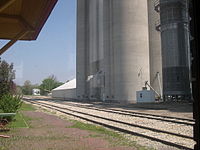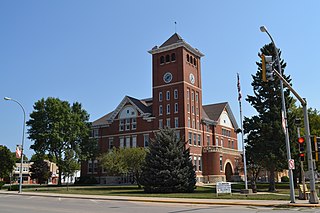
Wright County is a county in the U.S. state of Iowa. As of the 2020 census, the population was 12,943. The county seat is Clarion. The county organization became effective in January 1851, and is believed to be named either after Silas Wright, a governor of New York, or Joseph Albert Wright, a governor of Indiana.

Fontanelle is a city in Summerset Township, Adair County, Iowa, United States. The population was 676 at the time of the 2020 census.

Aredale is a city in Butler County, Iowa, United States. The population was 62 at the 2020 census.

Massena is a city in Cass County, Iowa, United States. The population was 359 at the time of the 2020 census. Massena's motto is: "The Home of Friendly People". Massena's sister community is Cumberland, Iowa. Massena is named after Massena, New York.
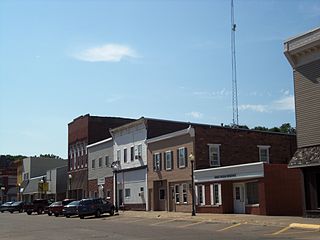
Wilton is a city in Cedar and Muscatine counties in the U.S. state of Iowa. The population was 2,924 at the time of the 2020 census. The Muscatine County portion of Wilton is part of the Muscatine Micropolitan Statistical Area.

Dow City is a city in Crawford County, Iowa, United States, along the Boyer River. The population was 485 at the time of the 2020 census.

Scranton is a city in Greene County, Iowa, United States. The population was 511 at the time of the 2020 census. It was named after Scranton, Pennsylvania.
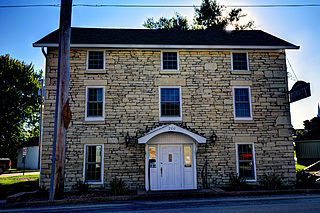
La Motte is a small city in northern Jackson County, Iowa, United States. The population was 237 at the time of the 2020 census.
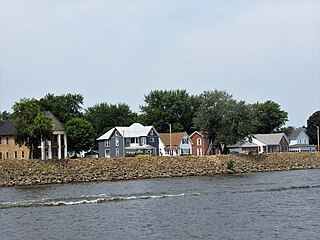
Sabula is a city in Jackson County, Iowa, United States. The population was 506 at the 2020 census. Sabula is the site of Iowa's only island city. The island has a beach and a campground, as well as a harbor with boat docks and storage sheds to store boats during the winter. Because of its proximity to Chicago, Sabula has become a popular vacation destination during the summer months. Sabula is the northern terminus of U.S. Route 67, a 1,560 mile (2,511 km) long north–south highway in the Central United States. The southern terminus of the route is at the United States–Mexico border in Presidio, Texas.

Burt is a city in Kossuth County, Iowa, United States. The population was 418 at the 2020 census.

Ely is a city in Linn County, Iowa. The population was 2,328 at the time of the 2020 census. It is part of the Cedar Rapids metropolitan area

Henderson is a city in Mills County, Iowa, United States. The population was 144 at the time of the 2020 census.

Nichols is a city in Muscatine County, Iowa, United States. The population was 340 at the time of the 2020 census. It is part of the Muscatine Micropolitan Statistical Area.

Shambaugh is a city in Page County, Iowa, United States. The population was 159 at the time of the 2020 census.

Varina is an incorporated small, rural village in Pocahontas County, Iowa, United States. The population was 68 at the time of the 2020 census.

Montezuma is a city in Poweshiek County, Iowa, United States. The population was 1,442 at the time of the 2020 census. It is the county seat of Poweshiek County.

Princeton is a city in Scott County, Iowa, United States. The population was 923 at the time of the 2020 census.
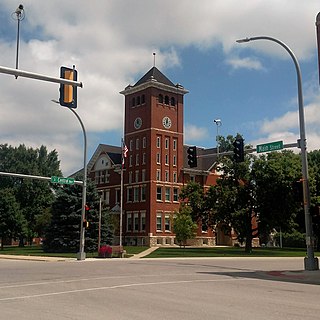
Clarion is a city in and the county seat of Wright County, Iowa, United States. The population was 2,810 at the time of the 2020 census.

Goldfield is a city in Wright County, Iowa, United States. The population was 634 at the time of the 2020 census.
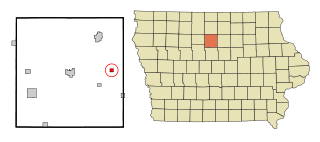
Rowan is a city in Wright County, Iowa, United States. The population was 123 at the time of the 2020 census.






